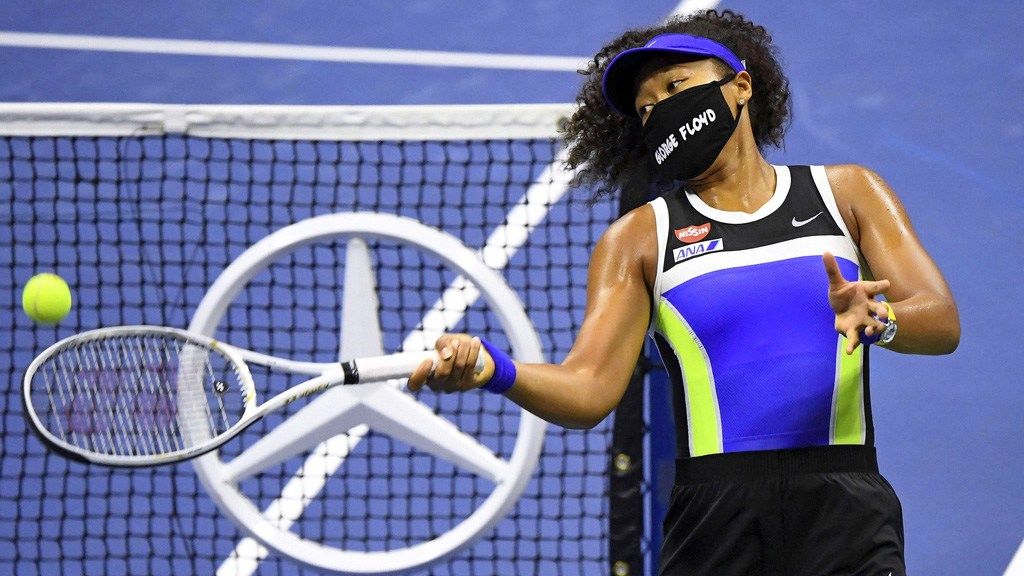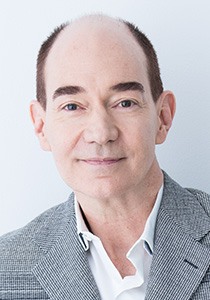
The Japanese Side of Ōsaka Naomi’s Protests Against Racial Injustice
Society Sports- English
- 日本語
- 简体字
- 繁體字
- Français
- Español
- العربية
- Русский
Extraordinary Courage
Ōsaka Naomi’s protests against racial injustice began at the Western and Southern Open, a tournament often described as a “prelude” to the US Open.
When yet another black man was shot dead by white police officers during the tournament, she announced her decision to withdraw from her scheduled semifinal match. The tournament’s organizers signaled their understanding of her decision, and all play at the tournament was suspended for a day.
Professor Robert Campbell, who has been following Ōsaka’s Twitter account for some time, says he feels “strongly moved” when he imagines the player’s state of mind as she took the decision to withdraw.
“I mean, this was a decision no one had ever taken before. Protests against racial discrimination have become an increasingly common sight in American sports since around 2016. This is particularly true in the NFL and NBA, where many players have ‘taken the knee’ in protest during the national anthem before the game. But these protests took place in team sports, where African-Americans and other people of color often represent a majority of the players. Ōsaka’s situation is quite different—she’s competing in a majority-white sport, and one in which players compete individually. She must have known that her decision might result in her being shut out from the sport. I think it showed extraordinary courage.”
“I Am a Black Woman”
Ōsaka explained her decision in English and Japanese on her Twitter account. In an August 26 tweet, she wrote that before being an athlete, she is a black woman.
— NaomiOsaka大坂なおみ (@naomiosaka) August 27, 2020
The message was welcomed and supported by many people. But in Japan, a substantial minority of people were critical of Ōsaka’s position—particularly her decision to define herself as a “black woman,” which some took to be a denial of her Japanese identity. For some, apparently, it was tantamount to admitting that she was “not really Japanese.”
Campbell says this is a misunderstanding that stems from the different histories of Japan and the United States.
“Ōsaka Naomi has a Japanese mother and Japanese citizenship. But she grew up in the United States, where attitudes to race are still largely defined by what used to be called the ‘one drop’ rule.”
After the American Civil war ended in 1865, many southern states passed discriminatory laws to enforce racial segregation between whites and blacks. For this, a legal definition was necessary. The result was the pernicious “one drop” rule: anyone with even one ancestor of African heritage would be regarded as “black.”
The Ongoing Struggle for Racial Justice
Of course, these laws were later abandoned, but the “one drop” way of thinking about race became deeply rooted in American society. As a result, many people who to Japanese eyes might look almost indistinguishable from the “whites” around them nevertheless define themselves as African-Americans and are seen that way by others.
And many African-Americans continue to face injustice in contemporary American society. Many still find their access restricted to social capital, including jobs, housing, medical care, and education—a reality that has been starkly exposed by the coronavirus pandemic.
“It’s not surprising that she identifies as a black woman, given that she’s lived most of her life in the United States, where this ‘one drop’ rule is so deeply rooted,” says Campbell. “So that’s part of the background. During the lockdown, she traveled to Minnesota where George Floyd was killed, and joined in the Black Lives Matter protests there. She must have heard what people were saying, including on social media. I think it was an eye-opener for her.”
The Japanese Side to Ōsaka’s Protests
The events of this summer prompted Ōsaka to bring her identity as a black woman to the forefront of her public image, and start to play an active part in social protests. Her decision seems to have made some people in Japan uncomfortable.
But Campbell believes the approach she has taken shows the influence of her Japanese background.
“As someone with a Japanese mother and a Haitian-American father, Ōsaka has a diverse background. But I think the way she has chosen to express herself shows the strong influence on her of typically Japanese modes of expression, thinking, and taking a position.”
After deciding to withdraw from her semifinals match, for example, she wrote in her tweet above: “I don’t expect anything drastic to happen with me not playing, but if I can get a conversation started in a majority white sport I consider that a step in the right direction.”
“She’s not making a stark declaration about racism,” Campbell says, “or speaking out against the inequalities in American society using pointed terms like ‘dignity’ or ‘human rights.’ She’s careful not to fan the flames of a divided society where people are already at each other’s throats. She’s more restrained in her speech: softly but firmly making her feelings known in the hope that ‘this might provide an opportunity to get a conversation started.’ I think that could be described as a ‘Japanese’ way of going about things.”
Using Masks to Bridge a Divide
The same is true of the seven masks Ōsaka wore to her matches at the US Open later in the summer.
“In America, the question of whether to wear a mask or not is connected to ideas about personal liberty, and the controversy about masks has only widened the divisions in society. Ōsaka tried to use masks to bridge these divides by writing the names of people who had died because of racial injustice on her masks. A mask may cover our mouths, but it needn’t make us silent: By writing on her masks the names of people who had lost their voices forever, Ōsaka ensured that more people would come to know about them, and perhaps a conversation could get started and their names carried on into the future. ‘Let’s remember them, talk about what happened to them in our daily lives, in the moments between work, or at a traffic light on the way home.’ I think that many of us living in Japan feel sympathetic to the way she chose to express her feelings.”
Campbell says he detects in Ōsaka’s protests a sensibility that Japanese culture has always valued: a willingness to work to reach an understanding and reconciliation between two opposing positions.
“Her approach has been quite distinctive. She’s encouraged people to think of those who have lost their lives, and to talk about discrimination. At least part of the reason, I think, comes from something that runs deep in Japanese culture and the Japanese sensibility: a tendency to seek reconciliation and agreement. I think maybe a few more people need to remember this sensibility right now.”
It took courage and determination for Ōsaka Naomi to speak out with a firm message of tolerance and hope. Let’s hope that more people here in Japan will take the time to listen to her message and take it to heart.
(Originally written in Japanese. Banner photo: Wearing a mask bearing the name of George Floyd, Ōsaka Naomi hits a ball into the stands after winning her quarter-final match at the US Open on September 8, 2020. © USA Today/Reuters/Kyōdō.)
